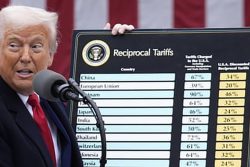One feature of the Esso/Hess/CNOOC 2016 Agreement – as indeed the 1999 Esso Agreement signed by President Janet Jagan – which has received little public attention is Gas which is addressed in Article 12 of both Agreements. In both Agreements “gas” or “natural gas” are defined in Article 1 – Definition. Additionally, both agreements have definitions of “associated gas” which is all Natural Gas produced from any Reservoir producing predominantly Crude Oil; and “non-associated gas which is defined as natural gas or gas other than associated gas.
Gas is considered a quite distinct product since the non-liquid physical character of natural gas at ordinary temperatures and pressure imposes economic and practical limits on its use. Gas generally is transported by pipeline while oil can be transported by pipeline, road or rail. In the offshore environment, underwater pipelines can transport either oil or gas but ships can only economically transport liquids. Of course, with development and technology, it is now possible for natural gas to be liquidified under particular temperature and pressure into liquefied natural gas (LNG) and transported by ships.
According to William Hughes in the 2016 publication Fundamentals of International Oil and Gas Law, the LNG industry has been characterised by high capital costs, even exceeding the usual high costs of the oil and gas industry generally, due to costs of constructing specialised facilities to liquefy and load the gas, constructing specialised tankers to transport the LNG, and constructing facilities to receive and regasify LNG at the port of destination. Coupled with this is the comparatively thin market for the product.
Over the past two decades, the economics of the industry have changed significantly as the cost of constructing the physical infrastructure declined and the number of suppliers and users declined. According to Hughes, Royal Dutch Shell, Exxon-Mobil-BHP and Excelerate-RWE have begun constructing LNG liquefaction vessels able to move to offshore or near shore gas reserves otherwise too small to support high costs of fixed infrastructure. It is perhaps arguable that the economics of gas production, including price swings, remain a bigger challenge than the technological issues and will clearly determine whether and how fast Guyana actually benefits from LNG, ministerial excitement notwithstanding.
These of course are not matters addressed in the Petroleum Agreement to which attention now turns. The Agreement provides that Associated Gas produced from any Oil Field within the Contract Area must first be used for the purposes related to the operations of production and production enhancement of Oil Fields, such as Gas injection, Gas Lifting and power generation.
The Agreement requires that a plan of utilisation of the Associated Gas be included in the Development Plan of each Oil Field, based on the principle of full utilisation of the Associated Gas, and with no impediment to normal production of Crude Oil. Where there is any excess Associated Gas in the Oil Field after utilisation as set out herein, the Contractor shall carry out a feasibility study regarding the utilisation of such excess Associated Gas of such Oil Field.
The Contractor – Esso/Hess/CNOOC-Nexen – has five years after the submittal of the Development Plan within which to submit the feasibility study.
Article 12.1 (c) provides that where the Contractor believes that excess Associated Gas of an Oil Field has commercial value, the Contractor is entitled, but not required, to make further investment to utilise such excess Associated Gas subject to terms at least as attractive as those established for Crude Oil in Article 11 dealing with Recoverable Contract Costs. In any case in which the Contractor believes improved terms are necessary for the development of excess Associated Gas, the Agreement requires the Government and the three oil companies to “carry out friendly negotiations in a timely manner to find a new solution to the utilisation of said excess Associated Gas and reach an agreement in writing.”
While conceding that such renegotiation is provided for in the Petroleum Agreement, this provision flies in the face of those who insist that there can be no renegotiation and those who keep repeating such banality are doing our country a great disservice.
The Agreement continues to favour the Contractor by providing not only for the Contractor to give notice to the Minister that the Development Plan does not include a plan to develop and utilize excess Associated Gas but for the Minister to have an election to off take the excess Associated Gas free of charge at the outlet flange of Contractor’s separator facility. Does the Government not realise that it enjoys sovereignty of all petroleum resources and that it does not require an election to take what is yours! And the Agreement goes further. No election or decision by the Minister with regards to the use of excess Associated Gas can adversely impact the Contractor’s normal development or production of Crude Oil.
And that is not all. Even this election has provisos that favour the Contractor. The Minister’s off take can only be exercised after the feasibility study is completed and the Contractor confirms by Notice to the Minister that it will not include development of excess Associated Gas in the Development Plan. Further, if the Contractor’s Notice includes a proposal to flare the excess Associated Gas in the Development Plan (which is a bad, bad idea for the environment), the Minister can propose an extension of the response period for the offtake election to Contractor, until such time as the Minister can provide the Contractor with a binding alternative proposal for development and use of the excess Associated Gas. In other words, if the Minister does not want to swallow a bad medicine, he must find and possibly finance the solution.
In any case in which the Government and the oil companies agree that the excess Associated Gas of an Oil Field has no commercial value, the Contractor may disposed of such gas in the most economic manner, consistent with good international petroleum industry practice, but provided that there is no impediment to normal production of Crude Oil. The absence of any specific language and requirement concerning environmental standards must be a cause for concern
All costs and expenses incurred by the Contractor in the production, use and/or disposal of the Associated Gas of an Oil Field as stipulated in Article 12.1 and those incurred in carrying out any feasibility study on the utilisation of the excess Associated Gas shall be charged to the Development Cost of the Oil Field and shall be Recoverable Contract Costs.
All costs incurred by the Government for the infrastructure and handling of excess Associated Gas which are not included in an approved Development Plan shall be at the sole risk and expense of the Government and will not affect the amount of Cost Oil and Profit Oil due to Contractor.











